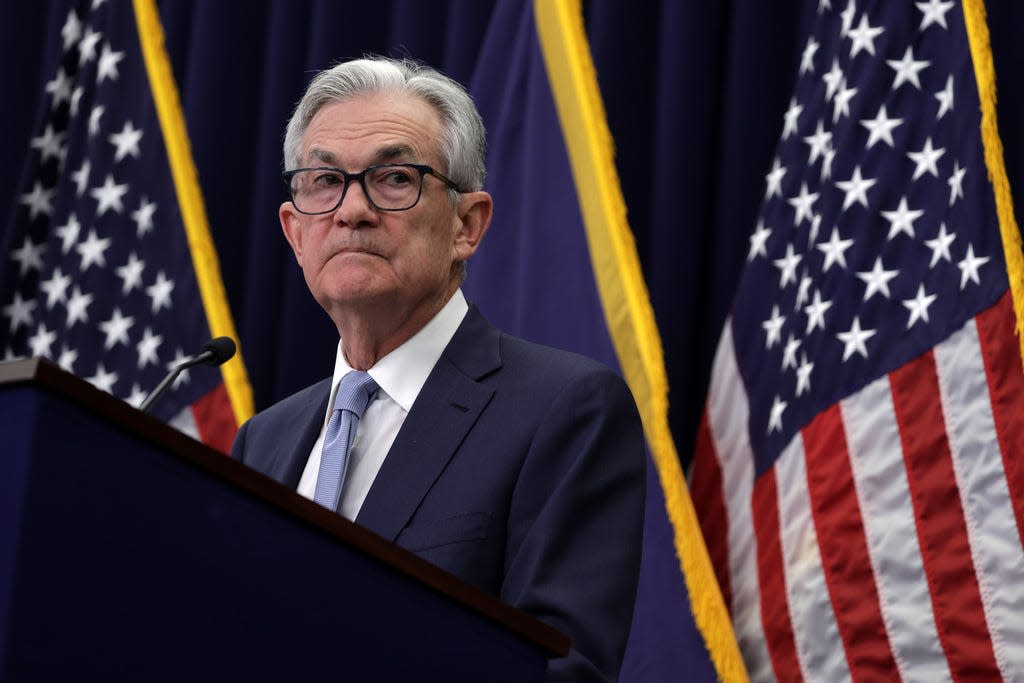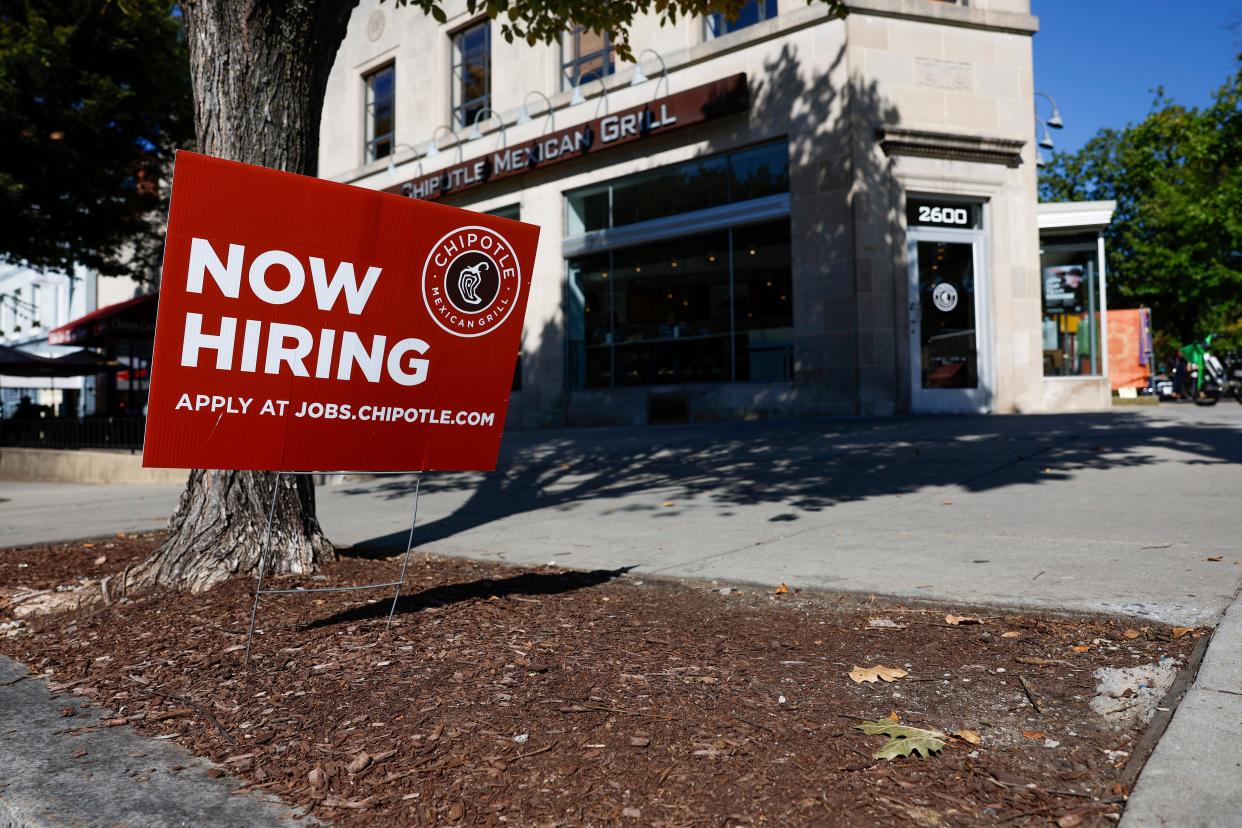How to tell if a recession hits in 2023. Keep a close eye on unemployment, consumer spending
The past two recessions walloped the U.S. like roundhouse punches to the jaw.
During the Great Recession of 2007-09, millions of Americans lost their homes to foreclosure and big banks teetered near bankruptcy. In the COVID-19 downturn of 2020, restaurants, shops and other businesses shut down within days or weeks, leaving 22 million people jobless.
The mild slump that most economists expect in 2023 will result from more jabs to an economy that has withstood a flurry so far but will finally be nudged over the edge.
Such a nuanced shift raises a pointed question: How will we even know we’re in a recession? What will it look and feel like?
The National Bureau of Economic Research determines when recessions begin and end but typically not until many months after they’ve started, leaving the public, and pundits, guessing.
Stranded college savings:New law lets 529 plan dollars roll into retirement.
What is a richcession: Term coined by reporter hints at new type of recession in 2023.
There’s little doubt there will be some pain as hundreds of thousands of workers likely lose their jobs. As a result, those employed will worry they might get laid off themselves and pull back spending. And the hottest job market on record will cool off, leaving workers with fewer opportunities and putting a damper on job hopping.
But don’t expect the trauma of the past two recessions, which each threw millions of people out of work.
“It will feel uncomfortable,” says Ryan Sweet, chief U.S. economist of Oxford Economics. “Recessions are always painful, but the next downturn won’t be anything close to … the past two.”
Some workers are already feeling it.
'It was absolutely astonishing'
Kali Myrick, of Salem, Oregon, was twice laid off from public relations jobs at fintech start-ups in 2022, part of a wave of tech industry layoffs. After losing the first job in April, she posted about her experience on LinkedIn, got messages from about 45 recruiters, had 15 interviews and landed a job with a 40% pay increase within a month.
"It was absolutely astonishing,” says Myrick, 38.

After the second layoff in November, she decided the market was turning south and freelancing was a better option. “It just felt more stable,” she says.
Myrick says her freelance income already equals her salary at the first fintech company and she should match her pay at the second firm within weeks.
In other words, the job market will almost certainly weaken in the coming months, but it probably won’t come to a standstill, economists say.
Lost 401(k)s: As job switchers chase higher wages, they may be leaving money behind. Here's what to know
Is a recession coming in 2023?
The nation could even dodge a slide. Economists are giving 65% odds of a recession this year, but 97% of them reckon it will be mild, according to a survey this month by Wolters Kluwer Blue Chip Economic Indicators. That means it will look more like recessions in the early 1990s and early 2000s than the two most recent episodes.
And the line between a modest recession and a slowdown that narrowly avoids one could be blurry.
Why?
The past two recessions were sparked by shocks to the economy – a housing crisis and a pandemic. A downshift this year would be triggered by a Federal Reserve that’s methodically cooling off an economy that has run too hot since emerging from the pandemic. Inflation hit a 40-year high of 9.1% in June before drifting down to a still-elevated 7.1% in November.
File taxes early, win some cash: Filing taxes early is never a bad idea. It may even come with a chance to win money this year
Musk sets record but not in a good way: Elon Musk now holds world record for largest loss of wealth ever, Guinness says

The Fed has jacked up interest rates more than 4 percentage points in 2022, the most since the early 1980s, and has penciled in another three-quarter point in hikes this year. The moves have clobbered the housing and stock markets but so far caused little damage to other industries.
Is the U.S. economy good right now?
Although the economy contracted in the first half of 2022, that was largely traced to changes in trade and inventories, two volatile categories. Consumer spending, which makes up 70% of economic activity, and business investment have grown solidly. The economy expanded by a healthy 3.2% annual rate in the third quarter and likely turned in a similar showing the last three months of the year, economists estimate.

Employers, meanwhile, added a sturdy 223,000 jobs in December as unemployment matched a 50-year low of 3.5%, though job growth has slowed from a monthly average of more than 400,000 earlier last year.
A big reason consumers and businesses have shrugged off higher interest rates so far is that they’re in good financial shape. Household debt made up 9.8% of disposable personal income in the third quarter, up from 8.3% in early 2021 but well below the 13.2% peak in late 2007.
Also, households still have about $1.5 trillion in pandemic-related savings, though that’s down from a peak of $2.6 trillion in 2021, according to Moody’s Analytics
Meanwhile, the outstanding debt of nonfinancial corporations hit a record $12.7 trillion in the third quarter but it comprised just 3.5% of corporate profits, down from 4.8% in late 2019, according to economist Oren Klachkin of Oxford Economics.
Put simply, consumers and businesses have been able to spend despite soaring inflation and higher borrowing costs. But that can continue only so long.
Does raising interest rates hurt the economy?
“We haven’t felt the full effects” of the Fed rate increases, says Wells Fargo economist Michael Pugliese, noting the hikes typically work with a lag of six to 12 months. And more rate increases are coming this year, he notes.
Businesses will probably be the first to feel the pinch of rising rates and high inflation, Pugliese and Sweet say. In the fourth quarter, earnings of S&P 500 companies likely fell 4.1% from the year-earlier period as profit margins were squeezed to their lowest level since 2020, FactSet estimates.
Higher borrowing costs and slimmer margins should prompt companies to reduce investment and hiring to shave costs, the economists say. Also, the stock market sold off sharply last year – notwithstanding a recent rally – meaning fewer companies can use their shares to buy smaller rivals to grow.
“First, companies cut back investment and hours worked; then they lay off workers,” Sweet says.
Yet the healthy consumer and business balance sheets that so far have staved off recession should also ensure that any downturn is contained, economists say.
Here’s how you’ll know the nation could be in a recession by mid-2023:
Are companies laying off in 2023?
Barclays economist Jonathan Millar expects the economy to shed about 50,000 jobs a month in the second quarter and 100,000 a month in the third quarter, or a total of about 600,000 positions. Pugliese expects 1.5 million to 2 million job losses.
Sweet predicts white-collar workers will bear the brunt of any layoffs. Manufacturing and construction workers will also feel the effects as Americans shift their purchases from furniture, appliances and other goods to services like dining out and going to the theater.
Restaurants, hotels and other sectors still struggling to find workers will likely cut far fewer positions, he says.
By comparison, the U.S. loses about 3 million jobs in the average recession, Millar says. Besides the 22 million job cuts in 2020, the economy shed nearly 9 million jobs in the Great Recession.
Job openings, Millar says, should also tumble from 10.5 million in November to about 7 million by midyear, matching the 2019 level. There are now 1.7 job vacancies for each unemployed worker, but that will probably fall to a more balanced 1.2 jobs per unemployed worker by midyear, hear says.
Most workers “are not going to feel comfortable switching” jobs, Sweet says, as they have during the so-called Great Resignation of the past two years.
In short, there will still be job opportunities, but fewer of them.
During the Great Recession, by contrast, there were about six unemployed people for each job opening.
The economists surveyed by Wolters Kluwer predict unemployment will climb from the current 3.5% to a peak of 4.9% this year. A rise of more than half a percentage point generally signifies a recession.
Will consumer spending increase in 2023?
As they hear of layoffs, “people will get worried about losing their jobs,” says Barclays' Millar.
As a result, he says, consumers will rein in their spending. “People will take that vacation, but they may be more cautious” about where they go and how much they spend, he says.
Millar and Sweet expect consumer spending to dip 1% to 2% at an annual rate in the second and third quarters.
Will businesses keep investing this year?
As consumers trim outlays, businesses will further reduce investment in new factories and equipment as well as hiring. Millar predicts business spending will fall 1% to 3% in the six month period starting in April.
What is the economic forecast for 2023?
Overall, Sweet expects the economy to contract by about a percentage point during the six- to nine-month recession he forecasts, about half the pace of a typical downturn.
This article originally appeared on USA TODAY: Is recession coming to the US in 2023? Here's how you'll know.
